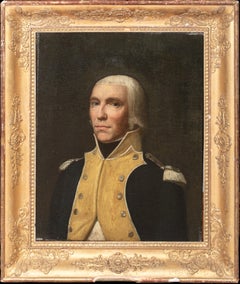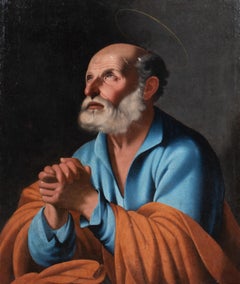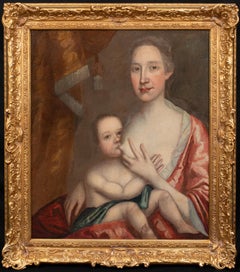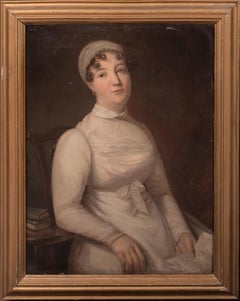Want more images or videos?
Request additional images or videos from the seller
1 of 14
UnknownPortrait Of Lorenzo Suarez 5th Count Of Corona 16th Century - Antonis Mor
$12,083.47List Price
About the Item
- Dimensions:Height: 24 in (60.96 cm)Width: 21 in (53.34 cm)
- Medium:
- Period:
- Condition:
- Gallery Location:Blackwater, GB
- Reference Number:Seller: 7832951stDibs: LU1577216234492
About the Seller
4.9
Gold Seller
Premium sellers maintaining a 4.3+ rating and 24-hour response times
Established in 2008
1stDibs seller since 2021
296 sales on 1stDibs
Typical response time: 1 hour
Authenticity Guarantee
In the unlikely event there’s an issue with an item’s authenticity, contact us within 1 year for a full refund. DetailsMoney-Back Guarantee
If your item is not as described, is damaged in transit, or does not arrive, contact us within 7 days for a full refund. Details24-Hour Cancellation
You have a 24-hour grace period in which to reconsider your purchase, with no questions asked.Vetted Professional Sellers
Our world-class sellers must adhere to strict standards for service and quality, maintaining the integrity of our listings.Price-Match Guarantee
If you find that a seller listed the same item for a lower price elsewhere, we’ll match it.Trusted Global Delivery
Our best-in-class carrier network provides specialized shipping options worldwide, including custom delivery.You May Also Like
Paper Planes
Located in Colorado Springs, CO
Original oil painting on canvas by artist Andrada Trapnell. Framed.
Category
21st Century and Contemporary Contemporary Portrait Paintings
Materials
Canvas, Oil
Woman face oil on canvas painting abstract expressionism
Located in Barcelona, Barcelona
Nerea Caos (1993) - Woman - Oil on canvas
Canvas size 30X24 cm.
Frameless.
Nerea Sánchez Castro, born in Ferrol, Galicia in 1993, an art student since high school, with constant pri...
Category
2010s Abstract Expressionist Abstract Paintings
Materials
Canvas, Oil
Düsseldorf school 1902 - Portrait of Sisterly love - German portrait
Located in Aartselaar, BE
Sweet and large oil painting "Sisterly love" signed and dated 1902 by August Algermissen
The present painting depicts two sisters seated in an interior, the youngest is gleefully lo...
Category
Early 20th Century Romantic Portrait Paintings
Materials
Canvas, Oil
$3,051
H 37.41 in W 25.6 in
Two Happy Sisters - Portrait of two black girls - Royal
Located in Aartselaar, BE
A portrait of two young girls by the Royal Portraitist Chen Yanning.
Both the artist as well as the sitters of this magnificent portrait are from racial...
Category
19th Century American Realist Portrait Paintings
Materials
Canvas, Oil
Antique French Belle Epoque Portrait of a Lady with Flowers, Original Frame
By French Belle Epoque
Located in Cirencester, Gloucestershire
Artist/ School: French School, late 19th century
Title: Portrait of a lady from the Belle Epoque period
Medium: oil painting on canvas, framed in origin...
Category
Late 19th Century Impressionist Portrait Paintings
Materials
Oil, Canvas
$2,540
H 28 in W 24 in D 1 in
Huge Spanish/ French Oil Painting Girl Seated in Chair
Located in Cirencester, Gloucestershire
Portrait of a Lady in a Chair
by Maria Tort Xirau (Catalan, 1924-2018)
signed lower corner
dated 1991
oil painting on canvas, framed
canvas: 47 x 37....
Category
1990s Modern Figurative Paintings
Materials
Canvas, Oil
$1,785
H 47 in W 37.5 in D 1 in
Early 1900's French Impressionist Signed Oil Couple in Green Lake Landscape
Located in Cirencester, Gloucestershire
Artist/ School: French School early 20th century, signed 'Guy Rose' to the lower left corner.
Title: Couple in a rowing boat on a lake within a landscape; v...
Category
Early 20th Century Impressionist Figurative Paintings
Materials
Oil, Canvas
Huge Spanish/ French Modernist Oil Painting Elegant Couple in Tender Embrace
Located in Cirencester, Gloucestershire
The Embrace
by Maria Tort Xirau (Catalan, 1924-2018)
signed lower corner
dated 1991
oil painting on canvas, framed
canvas: 42 x 29.5 inches
framed: 4...
Category
1990s Modern Figurative Paintings
Materials
Canvas, Oil
$2,265
H 53 in W 37 in D 1 in
1960's French Post Impressionist Oil The Circus Performers Montparnasse Frame
By Josine Vignon
Located in Cirencester, Gloucestershire
The Circus
by Josine Vignon (French 1922-2022)
signed on front and back
oil painting on canvas, framed in original 'Montparnasse' style frame.
framed: 26 x 23 inches
canvas: 18 x 1...
Category
Mid-20th Century Post-Impressionist Figurative Paintings
Materials
Canvas, Oil
$2,952
H 26 in W 23 in D 1 in
Lady in Pink Playing The Piano Large Oil Painting on Canvas
Located in Cirencester, Gloucestershire
Maggy Clarysse (1931-2011)
oil on canvas, unframed
18 x 24 inches
signed front and back
condition: excellent
provenance: all the paintings we have by this artist have come from the a...
Category
21st Century and Contemporary Impressionist Portrait Paintings
Materials
Canvas, Oil
More From This Seller
View AllPortrait Of Marshal Jean-Baptiste Bessières, Duc d'Istrie (1768-1813), Napoleon
Located in Blackwater, GB
Portrait Of Marshal Jean-Baptiste Bessières, Duc d'Istrie (1768-1813), circa 1810
French School
Large circa 1810 portrait of Marshal Jean-Baptiste Bessières, Duc d'Istrie, oil on c...
Category
Early 19th Century Portrait Paintings
Materials
Oil, Canvas
Penitent Saint Peter, 17th Century
Located in Blackwater, GB
Penitent Saint Peter, 17th Century
School Of Carlo Saraceni (1579-1620)
Large 17th century Italian Old master depiction of the Penitent Saint Peter, oil...
Category
17th Century Portrait Paintings
Materials
Canvas, Oil
Portrait Of A Wet Nurse & Baby, 17th Century
Located in Blackwater, GB
Portrait Of A Wet Nurse & Baby, 17th Century
Rare & Unusual English School Portrait
Large 17th Century English School portrait of a wet nurse and baby breastfeeding, oil on canva...
Category
18th Century Portrait Paintings
Materials
Oil, Canvas
Portrait of Anna Maria Porter, early 19th Century attributed to THOMAS BARBER
By Thomas Barber
Located in Blackwater, GB
Portrait of Anna Maria Porter, early 19th Century
attributed to THOMAS BARBER (1768-1843)
Early 19th century portrait of Anna Maria Porter, oil on canvas attributed to Thomas Porte...
Category
Early 19th Century Portrait Paintings
Materials
Canvas, Oil
Judith Beheading Holofernes, 17th Century School of Carlo MARATTA (1625-1713)
By Workshop Of Carlo Maratta
Located in Blackwater, GB
Judith Beheading Holofernes, 17th Century
School of Carlo MARATTA (1625-1713)
Carlo Maratta
Large 17th century Italian Old Master depiction of Jud...
Category
17th Century Portrait Paintings
Materials
Oil, Canvas
Study Of Lions, 19th Century by M C FEHR (German)
Located in Blackwater, GB
Study Of Lions, 19th Century
by M C FEHR (German)
Large 19th Century German School study of Lions before their den, oil on canvas by M C Fehr. Excellent quality and condition early...
Category
19th Century Portrait Paintings
Materials
Canvas, Oil
Recently Viewed
View AllMore Ways To Browse
George Gower
Joan Cruspinera
John Eaton
Lionel Ellis
Old Master Family Portrait
Painted Birkin
Race Car Painting
Rosie Huntington
Scholar Oil Painting
Spanish Jewish
Terry Shelbourne
Tiziano Vecellio
16th Century Religious Painting
1860 Oil Painting Of Woman In Black Dress
Antique Oil Painting Skull
Antique Oil Portrait Child
Bernardino Campi
Consuelo Vanderbilt



